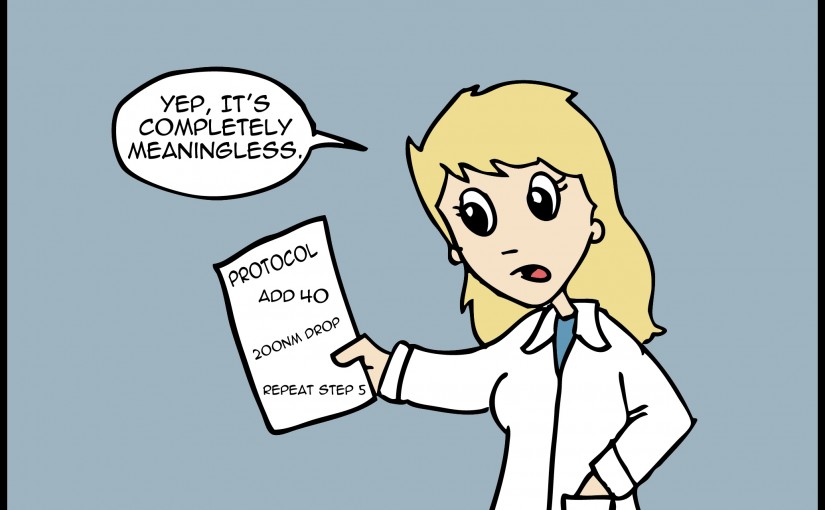Make sure you have the main protocol written up and visible whilst you carry out the procedure. You will probably also have a notebook for rough notes.
The mistake is to assume you will never need to look at these again. Most likely you will, at least for some of them. So don’t jot numbers and names down with no reference to what they mean. Put a date and title at the top and use comprehensible language to show what each bit describes. It doesn’t have to be full sentences as long as you still understand it in five days’ time.
Not only will this help you remember which sample/individual corresponds to which data set, but it will also help you analyse mistakes, or find where changes might have improved the procedure.
Get Practical Tips- Don’t ever use loose bits of paper. They get lost.
- Date everything, including your electronic files and rough calculations.
- Write down any changes you make to procedures, so that if the outcome changes you have some possible explanations.
Read Personal Perspective
I did some experiments where I had to add about 10 different inhibitors to cells and work out the best concentrations for each. Each time I scrawled down the values for each inhibitor without labels. I knew at the time which was which, but a few weeks after when I came to analyse it, this information had long since departed me. It was stressful and time consuming to work out which concentrations I had used for which drug at which time.
